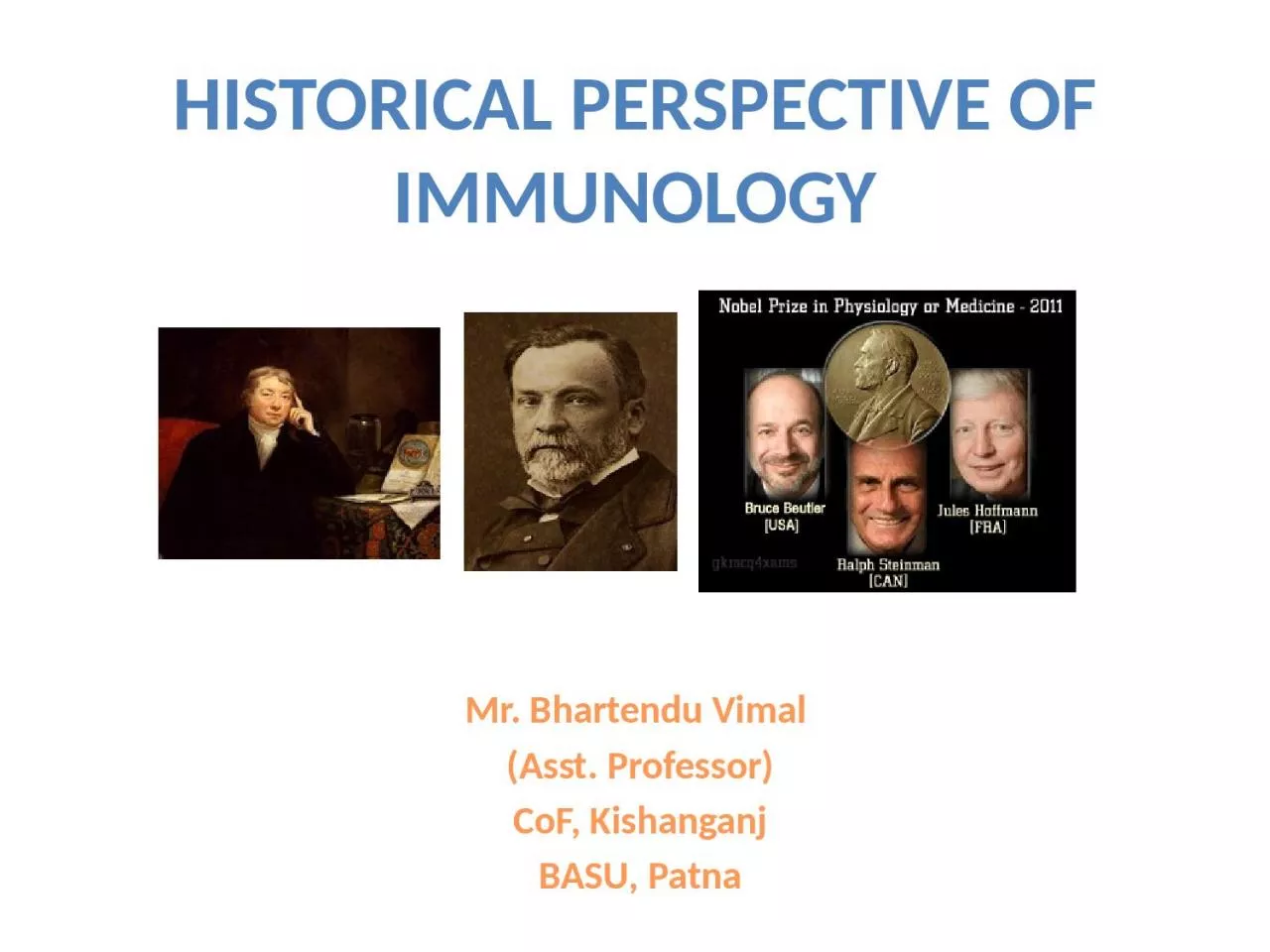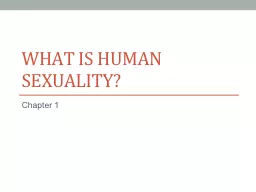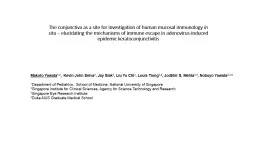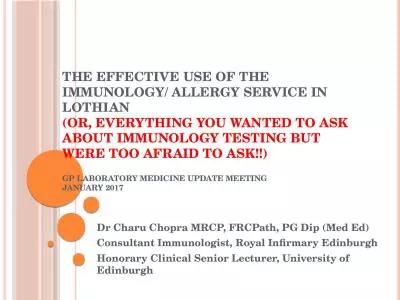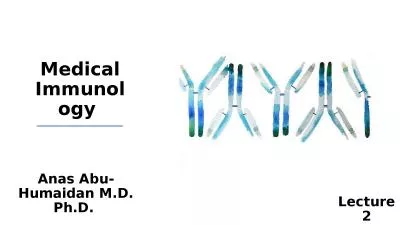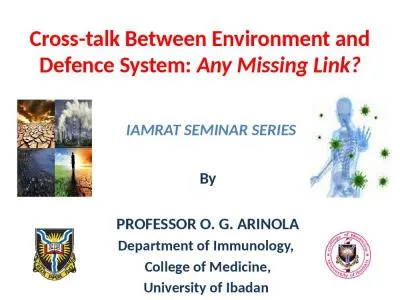PPT-Historical Perspective of Immunology
Author : candy | Published Date : 2022-06-08
Mr Bhartendu Vimal Asst Professor CoF Kishanganj BASU Patna Introduction Immunology and Immune system To rid the body of foreign particles microbial and otherwise
Presentation Embed Code
Download Presentation
Download Presentation The PPT/PDF document "Historical Perspective of Immunology" is the property of its rightful owner. Permission is granted to download and print the materials on this website for personal, non-commercial use only, and to display it on your personal computer provided you do not modify the materials and that you retain all copyright notices contained in the materials. By downloading content from our website, you accept the terms of this agreement.
Historical Perspective of Immunology: Transcript
Download Rules Of Document
"Historical Perspective of Immunology"The content belongs to its owner. You may download and print it for personal use, without modification, and keep all copyright notices. By downloading, you agree to these terms.
Related Documents

